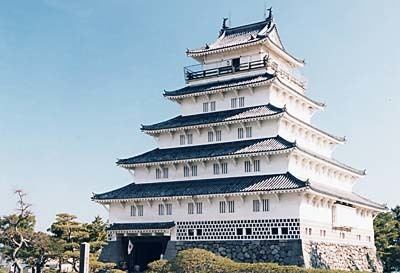 | ||
The Shimabara Domain (島原藩, Shimabara-han) was a Japanese domain of the Edo period. It is associated with Hizen Province in modern-day Saga Prefecture.
Contents
In the han system, Shimabara was a political and economic abstraction based on periodic cadastral surveys and projected agricultural yields. In other words, the domain was defined in terms of kokudaka, not land area. This was different than the feudalism of the West.
History
The Arima clan, who were Kirishitan daimyō, ruled over Shimabara Domain in the late Muromachi period from Hinoe Castle and Hara Castle. After the start of the national isolation policy, the Tokugawa Bakufu banned Christianity from 1614 and replaced Arima Naozumi with Matsukura Shigemasa. Matsukura, who strictly enforced the prohibition against Christianity with mass executions, also severely raised taxes to pay for the construction of his new Shimabara Castle from 1618-1624. This oppression of the peasants was a major factor leading to the Shimabara Rebellion.
After the rebellion was suppressed, the domain was given to the Kōriki clan. It then passed to the Fukōzu-Matsudaira family, who ruled it from 1668 until 1871 (with a brief hiatus from 1747-1774, during which the domain was ruled by the Toda clan, cousins of the Fukōzu-Matsudaira).
In the Bakumatsu period, Matsudaira Tadachika became an influential official in the Tokugawa administration. However, the final daimyo of Shimabara, Matsudaira Tadakazu pledged Shimabara domain in support of Emperor Meiji in the Boshin War, proved his loyalty by committing his troops to the northern campaign against the Ōuetsu Reppan Dōmei, fighting at Akita and Morioka.
List of daimyo
The hereditary daimyo were head of the clan and head of the domain.
